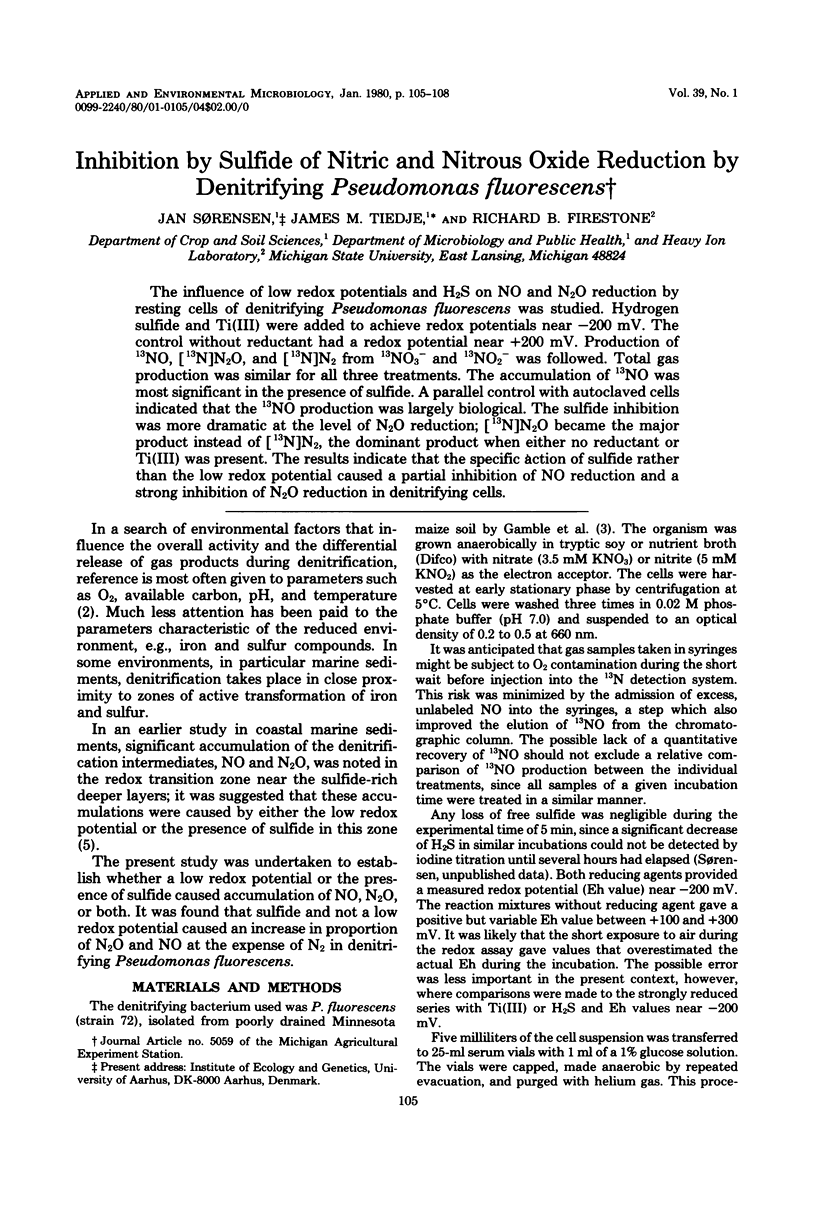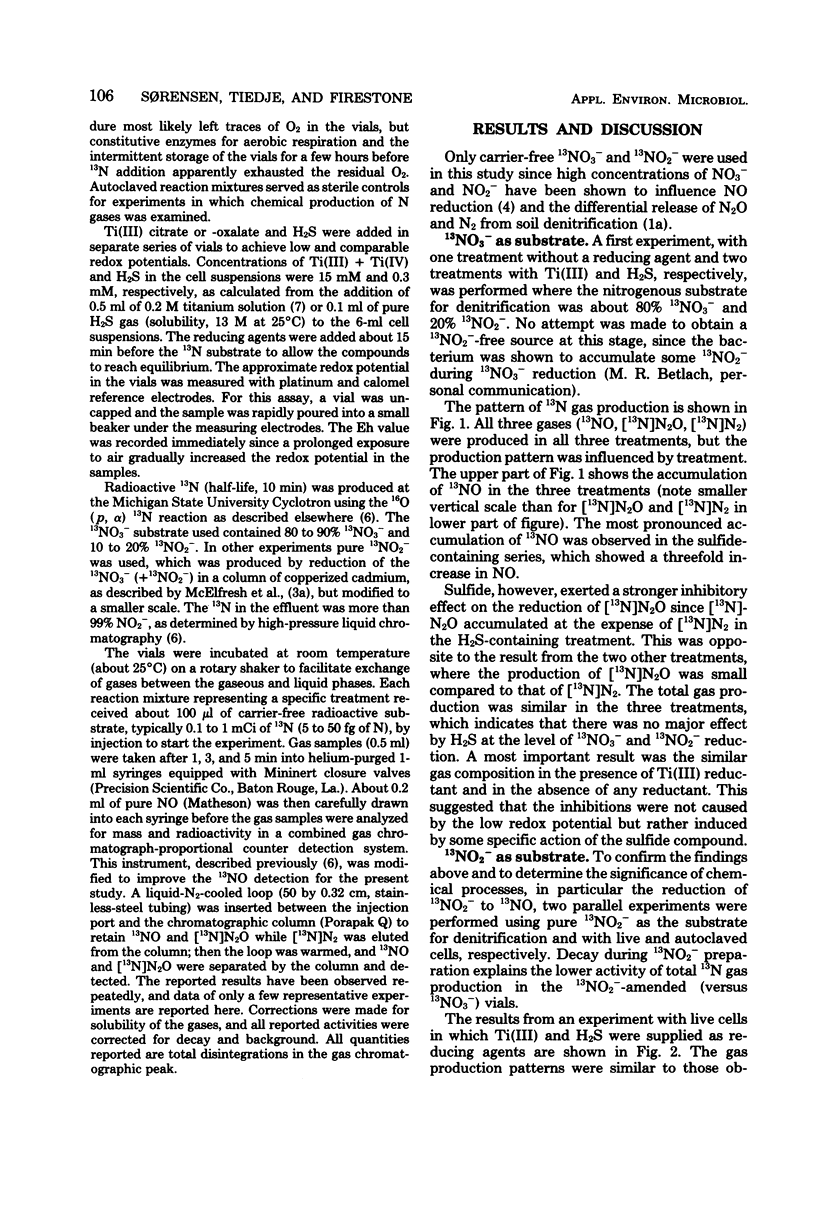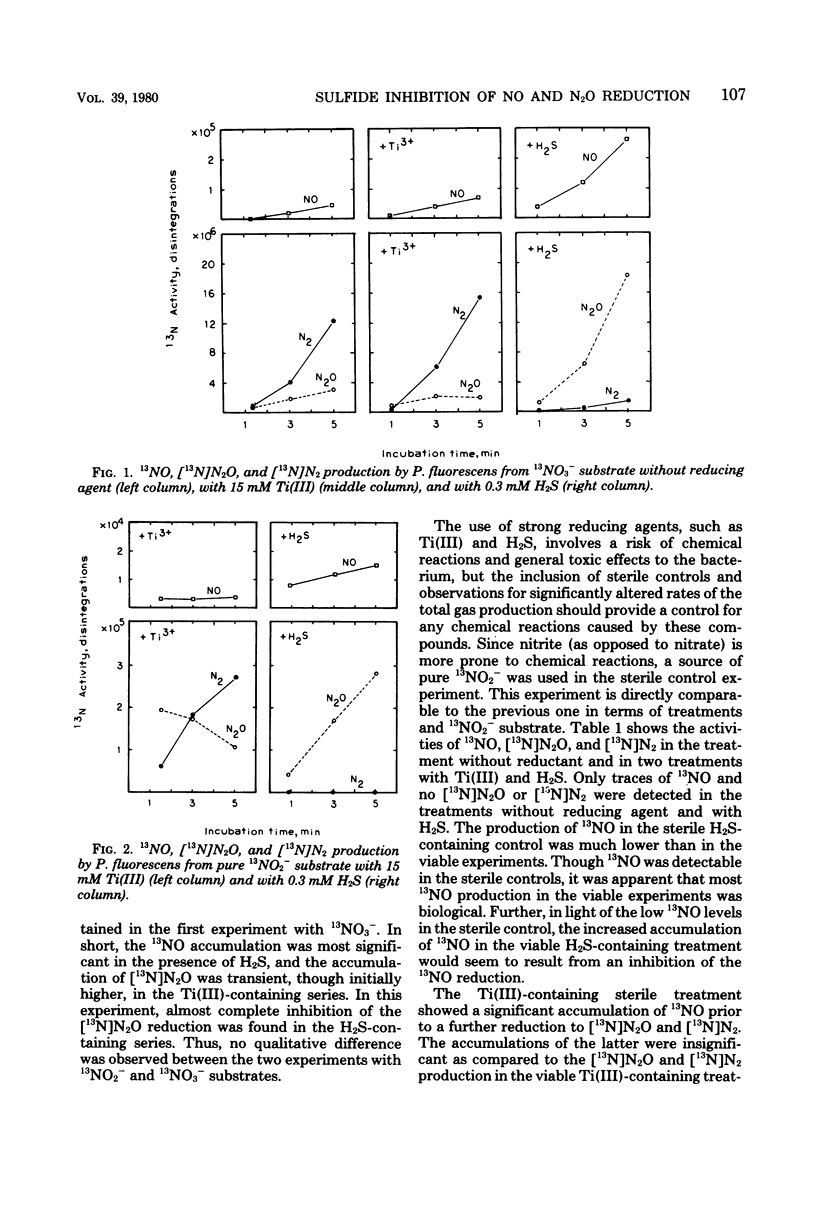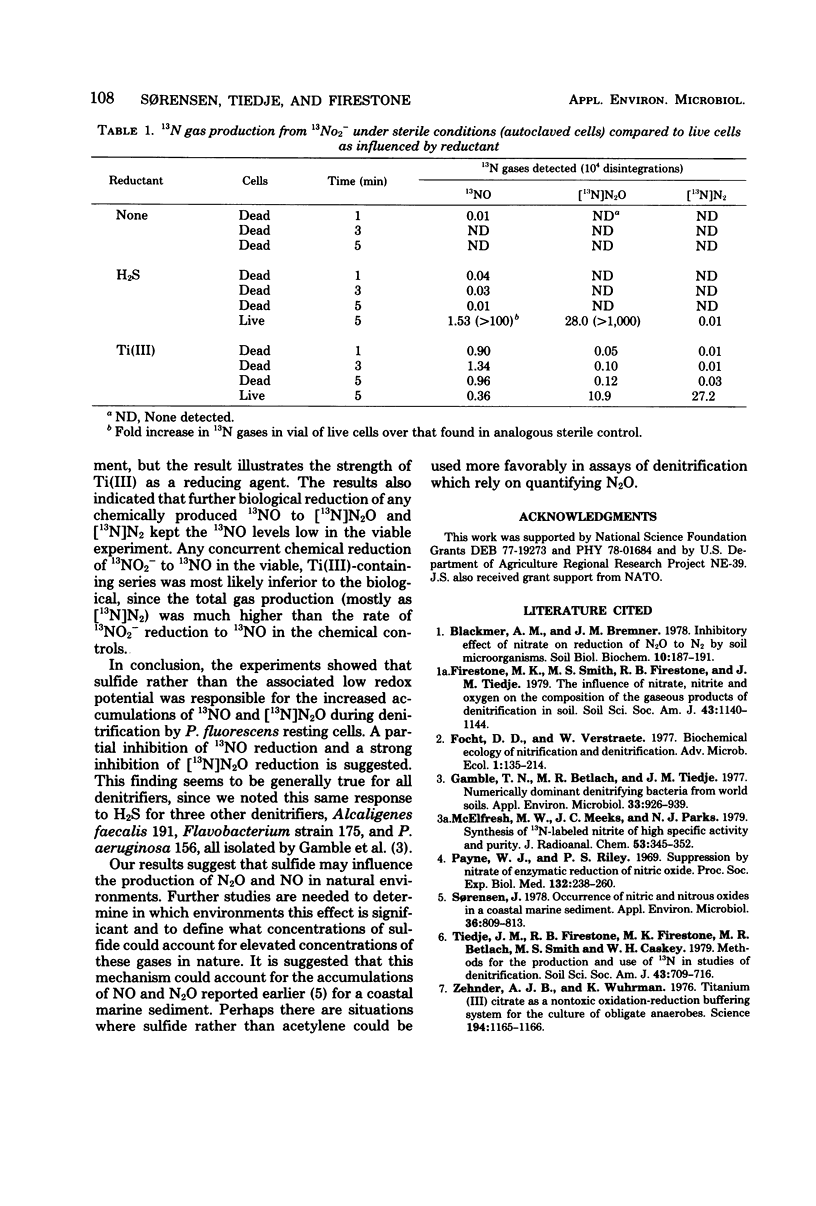Abstract
The influence of low redox potentials and H2S on NO and N2O reduction by resting cells of denitrifying Pseudomonas fluorescens was studied. Hydrogen sulfide and Ti(III) were added to achieve redox potentials near -200 mV. The control without reductant had a redox potential near +200 mV. Production of 13NO, [13N]N2O, and [13N]N2 from 13NO3- and 13NO2- was followed. Total gas production was similar for all three treatments. The accumulation of 13NO was most significant in the presence of sulfide. A parallel control with autoclaved cells indicated that the 13NO production was largely biological. The sulfide inhibition was more dramatic at the level of N2O reduction; [13N]N2O became the major product instead of [13N]N2, the dominant product when either no reductant or Ti(III) was present. The results indicate that the specific action of sulfide rather than the low redox potential caused a partial inhibition of NO reduction and a strong inhibition of N2O reduction in denitrifying cells.
Full text
PDF



Selected References
These references are in PubMed. This may not be the complete list of references from this article.
- Gamble T. N., Betlach M. R., Tiedje J. M. Numerically dominant denitrifying bacteria from world soils. Appl Environ Microbiol. 1977 Apr;33(4):926–939. doi: 10.1128/aem.33.4.926-939.1977. [DOI] [PMC free article] [PubMed] [Google Scholar]
- Payne W. J., Riley P. S. Suppression by nitrate of enzymatic reduction of nitric oxide. Proc Soc Exp Biol Med. 1969 Oct;132(1):258–260. doi: 10.3181/00379727-132-34192. [DOI] [PubMed] [Google Scholar]
- Sørensen J. Occurrence of nitric and nitrous oxides in a coastal marine sediment. Appl Environ Microbiol. 1978 Dec;36(6):809–813. doi: 10.1128/aem.36.6.809-813.1978. [DOI] [PMC free article] [PubMed] [Google Scholar]
- Zehnder A. J., Wuhrmann K. Titanium (III) citrate as a nontoxic oxidation-reduction buffering system for the culture of obligate anaerobes. Science. 1976 Dec 10;194(4270):1165–1166. doi: 10.1126/science.793008. [DOI] [PubMed] [Google Scholar]


